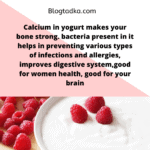Food allergies and intolerances affect millions of people worldwide, impacting their quality of life and requiring careful attention to dietary choices. While both conditions can cause discomfort and adverse reactions, they are distinct in their mechanisms and symptoms. This article aims to clarify the differences between food allergies and intolerances, their common triggers, and management strategies.
What Are Food Allergies?
A food allergy is an immune system response triggered by certain proteins found in food. When a person with a food allergy consumes the allergen, their immune system mistakenly identifies it as harmful and produces antibodies to fight it. This immune response can cause a range of symptoms, from mild to severe, within minutes to hours after eating the offending food.

Common Food Allergens
The most common food allergens include:
– Peanuts
– Tree nuts (e.g., almonds, walnuts)
– Shellfish
– Fish
– Milk
– Eggs
– Wheat
– Soy
Symptoms of Food Allergies

Symptoms of a food allergy can vary widely and may include:
– Hives, itching, or eczema
– Swelling of the face, lips, tongue, or throat
– Difficulty breathing or wheezing
– Abdominal pain, diarrhea, or vomiting
– Dizziness or fainting
– Anaphylaxis (a severe, life-threatening reaction)
If you suspect you have a food allergy, it is crucial to consult with a healthcare professional for diagnosis and appropriate management.
What Are Food Intolerances?
Food intolerances involve the digestive system rather than the immune system. They occur when the body lacks the necessary enzymes to break down certain foods, leading to digestive discomfort and symptoms. Unlike food allergies, food intolerances are generally not life-threatening but can significantly impact an individual’s well-being.
Common Food Intolerances
Some common food intolerances include:
– Lactose intolerance (inability to digest lactose, a sugar found in dairy products)
– Gluten intolerance (celiac disease or non-celiac gluten sensitivity)
– Histamine intolerance (difficulty metabolizing histamine-rich foods)
– Fructose intolerance (malabsorption of fructose)

Symptoms of Food Intolerances
Symptoms of food intolerances often include:
– Bloating or gas
– Abdominal pain or cramps
– Diarrhea or constipation
– Nausea
– Headaches
– Fatigue
Diagnosis and Management
Diagnosing food allergies and intolerances involves a combination of medical history, physical examination, and diagnostic tests, such as skin prick tests, blood tests, or elimination diets.
Management Strategies
Food Allergies
Strict avoidance of the allergen is essential. Carry an epinephrine auto-injector (e.g., EpiPen) if prescribed by your doctor and educate yourself and others about your allergy to prevent accidental exposure.
Food Intolerances
Identify and eliminate trigger foods from your diet. Some individuals may benefit from digestive enzyme supplements or probiotics to improve gut health.
Conclusion
Food allergies and intolerances are common conditions that require careful management and dietary modifications. Understanding the differences between these two conditions can help individuals make informed decisions about their food choices and seek appropriate medical care when needed. If you suspect you have a food allergy or intolerance, consult with a healthcare professional for diagnosis, treatment, and personalized dietary advice.













